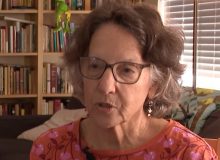By Quin Hillyer at the Washington Examiner, March 12;
Japanese and Russian scientists trying to resurrect woolly mammoths are risking a morally hairy situation.
The journal Scientific Reports this week published a story about the scientists using cell nuclei from the remains of a 28,000-year-old mammoth to advance the cause of species regeneration. After researchers implanted the nuclei into mouse ova, “the nuclei developed to a state just before cellular division.”
The cell division never took place in these experiments, apparently because the nuclei were partially damaged. But one lecturer in developmental biology who studied the findings said “there’s a chance [at successful cloning], if we can obtain better-preserved nuclei.”
If this sounds like something out of Jurassic Park, it is indeed in the same general territory but even more realistic. In the famous bring-back-the-dinosaurs book and movie, the great reptiles were resurrected using DNA from yet another species — in that case, insects trapped in amber. This time, rather than rely on DNA from insect-bearing, semi-precious gems, the scientists are taking the DNA tissue directly from preserved specimens of the very species they are trying to regenerate.

Still, the same underlying cautionary tale that suffused Jurassic Parkshould give pause to these scientists as well. The law of unintended consequences applies: Just as occurs when foreign species are released into new ecosystems, all sorts of harm and destruction can occur when humans try to play God with creation. One need not fear mayhem on the streets of San Diego (as in “The Lost World”) to realize that much can go wrong, either with the science or the subsequent human reaction thereto, from the introduction of a now-alien life form.
More than those specifically practical concerns, ethical and moral questions should arise as well. Where should human science draw moral lines? When should humankind be humble about this Earth that is our inheritance? If man assumes the authority to recreate long-expunged life, how is his reach, or ego, or awesome power to be limited?
Author Julie Edwards, better known as the actress Julie Andrews, penned a charming 1974 teen novel called The Last of the Really Great Whangdoodles that explored these issues as well. …
[The full column is at this link.]






